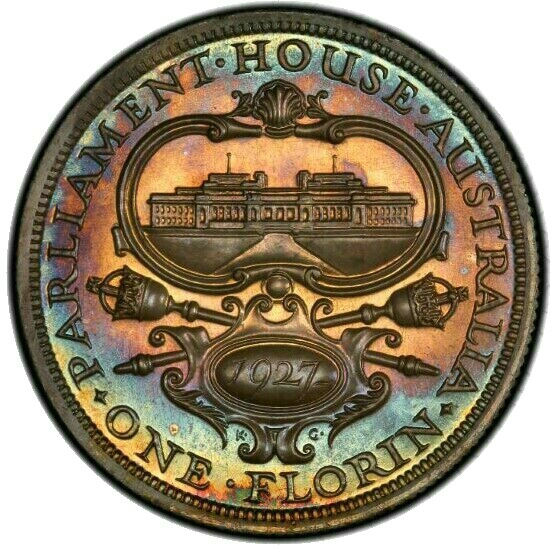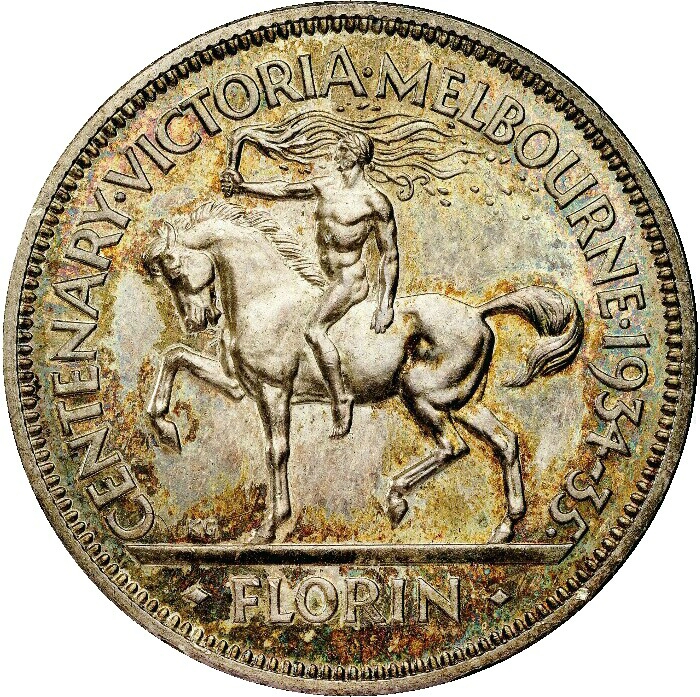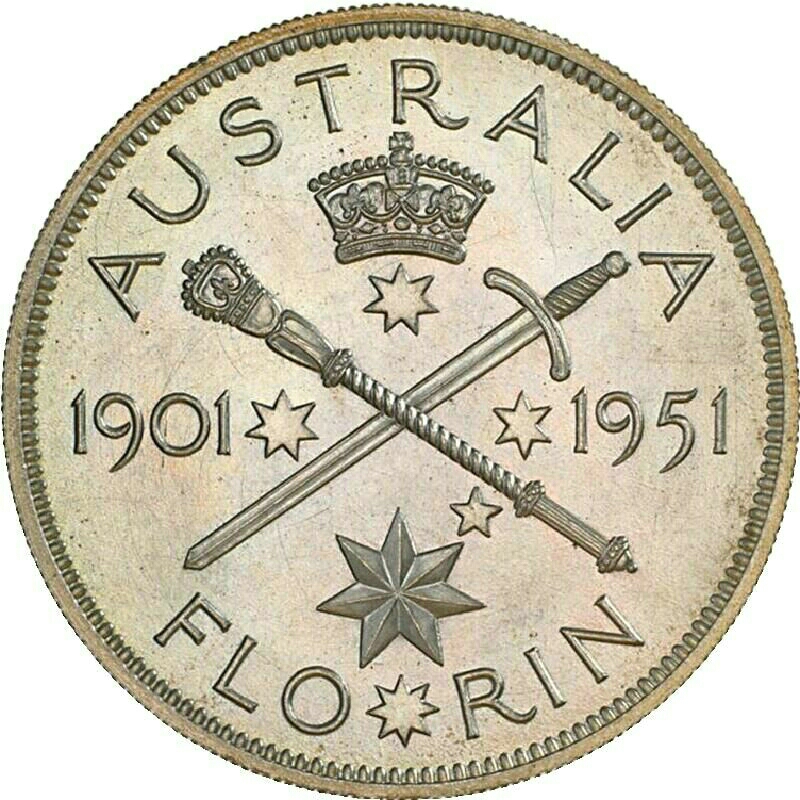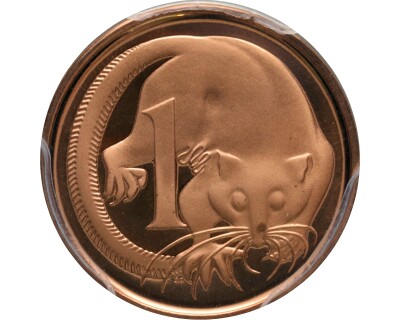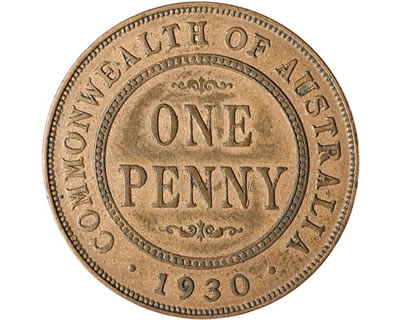Collecting Old Australian Coins
Florin
The florin was struck from 1910 to 1963 and although the 1910 florin was hoarded like lower denominations, its relative rarity and high value limited this effecting a rather scarce coin today. In low grades however it is still readily available for under $50 though mint state expect to spend at least $1000.
The key date of the general George V series is the 1932 though the 1914-H, 1915, 1915-H, 1932, and 1933 are scarce also. Each of these start at about $5000 in mint state though only the 1932 will set you back more than $100 in circulated grades.
The George VI series poses just one challenge, the 1939 which is relatively scarce with a mintage of just 630,000. These can be had for just $25 in average grades but start at about $750 in mint state. The other dates are easier and can generally be found for just under $100 each. Like the shilling, only the San Francisco mint assisted Australian coin production during World War II and this was during the years of 1942, 1943, and 1944 as denoted by an S mint mark above the date.
Florins of the Elizabeth II series are generally quite easy to acquire though 1954 and 1956 are quite scarce in mint state and tend to sell for around the $100 mark while other dates can be found for as low as $10 in mint state. Circulated examples are generally only worth bullion value of any Elizabeth II florin date.
In 1927 coin collecting took a turn in Australia with the first commemorative issue to mark the opening of the Parliament House in Canberra. This was followed in 1934 with the issue of the Melbourne Centenary florin, the first circulating strike commemorative coin sold for above face value in Australia - for 3 shillings though only 54,000 sold making it scarce today.
In 1951 Australia issued the Jubilee florin to mark 50 years since Federation, then in 1954 another was issued to mark the Royal Visit to Australia. Because of the differing designs these were generally hoarded and are quite common in top grades though the tiny initial mintage of the Melbourne Centenary ensures its perpetual scarcity in any grade.
